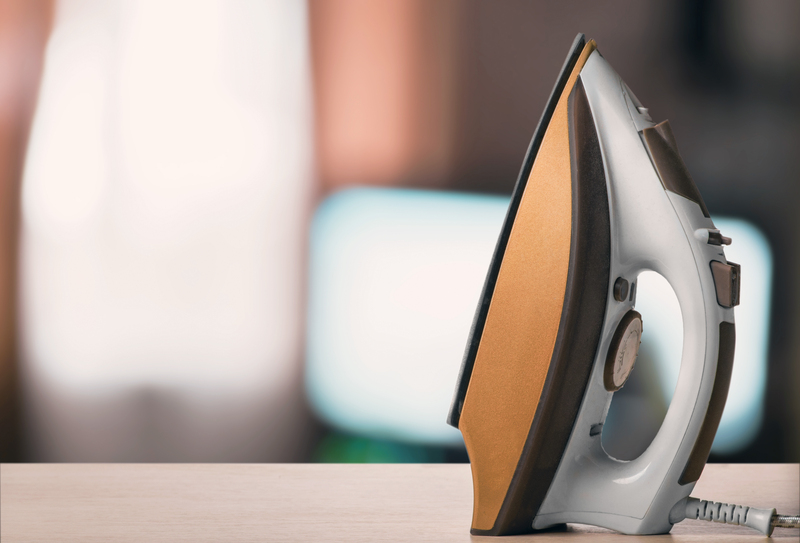Crafting a Damp-Free Ambience in Your Home
Posted on 30/06/2025
Crafting a Damp-Free Ambience in Your Home: The Ultimate Guide
A damp-free home is the foundation for a healthy, cozy, and welcoming living space. Unchecked moisture can not only deteriorate your property's structure but also impact your health. If you want to create an ambience free from dampness, this comprehensive guide on crafting a damp-free ambience in your home will walk you through practical tips, essential strategies, and expert advice for success.

Why a Damp-Free Atmosphere Matters
Before delving into actionable solutions, understanding the importance of maintaining a moisture-free environment is crucial. Excess humidity and persistent dampness can lead to:
- Structural damage to walls, floors, and ceilings
- Mold growth, which can aggravate allergies and respiratory conditions
- An undesirable, musty odor
- Unpleasant living conditions
By eliminating dampness, you not only safeguard your house but also enhance comfort, air quality, and even property value.
Identifying the Causes of Damp in Your Home
Achieving a damp-free environment at home starts with identifying and understanding the root causes of excess moisture. The most common sources include:
1. Condensation
Condensation occurs when warm, moist air meets a colder surface, causing water droplets to form. Common culprits in the house are windows, walls, and bathroom mirrors, usually due to poor ventilation.
2. Rising Damp
Rising damp refers to moisture moving up from the ground through walls and floors. This happens when your property's damp-proof course is compromised or missing.
3. Penetrating Damp
Caused by water seeping in from outside due to leaking pipes, damaged roofing, or defective gutters, penetrating damp typically appears on walls and ceilings exposed to external elements.
4. High Indoor Humidity
Daily activities, such as cooking, showering, and drying clothes indoors, can raise humidity levels, further contributing to a damp ambience.
Signs Your Home Has a Dampness Problem
Early detection is key to maintaining a damp-free home environment. Watch for these warning signs:
- Peeling paint or wallpaper
- Black or green mold patches on walls
- Musty odors that persist despite cleaning
- Water stains or tide marks on walls
- Condensation on windows, especially in the morning
- Crumbling plaster or brickwork
If you notice any of these indicators, it is crucial to take immediate action to prevent escalation and restore a damp-free ambiance.
Proven Strategies to Achieve a Damp-Free Home
A multi-pronged approach is necessary to eliminate dampness. Here are the top expert-recommended techniques you can put into practice:
1. Strengthen Ventilation
- Open windows regularly, particularly after cooking, bathing, or cleaning.
- Install extractor fans in kitchens and bathrooms to remove moist air.
- Consider using trickle vents on windows to constantly circulate air.
- Keep internal doors open to facilitate whole-house air flow.
Proper ventilation is essential for maintaining dry air and preventing the build-up of humidity that causes dampness.
2. Use Dehumidifiers
Investing in a high-quality dehumidifier is a game-changer for keeping your home damp-free. Modern models come with humidity sensors that maintain ideal indoor levels (between 40-60%). Place units in the most moisture-prone rooms, such as basements, bathrooms, and laundry spaces.
3. Fix Leaks and Water Infiltration Promptly
- Regularly inspect plumbing, roofs, and gutters for leaks or damage.
- Seal cracks in walls, windows, or foundations to prevent water entry.
- Clean gutters and downpipes to avoid blockages and overflow.
Quick and thorough repairs will keep your home dry and preserve your damp-free ambience.
4. Insulate Walls and Windows
Well-insulated surfaces are less susceptible to condensation and temperature fluctuations.
- Install double or triple-glazed windows to create a thermal barrier.
- Insulate external walls with appropriate materials to block moisture ingress.
- Use thermal curtains and draft excluders to keep interiors dry and warm.
5. Control Household Activities
- Dry clothes outdoors whenever possible, or use vented tumble dryers.
- Cover pots while cooking to reduce steam.
- Wipe down bathroom tiles and surfaces post-shower.
- Keep houseplants in check; overwatering can increase humidity indoors.
6. Install a Damp-Proof Course (DPC)
A damp-proof course (DPC) is a protective barrier installed in the structure of your property to prevent rising damp from the ground. If your house is older or lacks a visible DPC, professional installation may be necessary.
7. Opt for Moisture-Resistant Materials
Choose moisture-resistant paints, sealants, and construction materials in high-risk areas. Bathroom tiles, waterproof wallpapers, and vapor barriers can all help maintain a damp-free environment.
DIY Remedies for Damp Prevention
While large-scale damp issues may require professional intervention, you can take several DIY steps to keep your home's ambience free from dampness:
- Salt Bowls: Place bowls of salt in damp corners. Salt naturally absorbs moisture, helping dry out small areas.
- Baking Soda: Open boxes or bowls of baking soda can reduce humidity in cupboards and closets.
- Vinegar Sprays: Use a mixture of vinegar and water to clean away mold and kill spores.
- Charcoal Briquettes: These can absorb moisture and odors when placed inconspicuously in problem areas.
Regular Maintenance: Your Damp-Free Checklist
Consistency is key for a truly damp-free home. Create a quarterly checklist to stay on top of potential problem spots:
- Inspect roofing and gutters after heavy storms or high winds
- Test extractor fans and replace filters as needed
- Check basements and crawl spaces for leaks or water pooling
- Seal up any new cracks or gaps that appear around doors and windows
- Clean and reposition dehumidifiers for maximal efficiency
Health Benefits of a Damp-Free Ambience
Living in a damp-proof home isn't just about aesthetics or property preservation--it has tangible health advantages. By eliminating dampness:
- You reduce the risk of respiratory illness linked to mold and mildew exposure.
- You minimize allergens in the home, helping asthmatics and allergy sufferers.
- You prevent infestations of dust mites, silverfish, and mold-loving insects.
- You create a comfortable, welcoming environment for your family and guests.
When to Call in the Experts
Despite your best efforts, some damp issues require professional attention--especially those related to structural defects, widespread mold, or persistent rising/penetrating damp. Contact a certified damp specialist or building surveyor if:
- Mold keeps returning despite your cleaning and preventative efforts
- There are visible watermarks or tide lines on walls
- Large areas of plaster or paint are bubbling or crumbling
- You experience unexplained, consistent musty odors
An expert assessment ensures tailored solutions to address your specific situation for lasting peace of mind and a damp-proofed home ambience.
Eco-Friendly Solutions for Moisture Control
Today's homeowners are increasingly eco-conscious. Crafting a damp-free ambiance doesn't have to come at the expense of the environment. Consider these green strategies:
- Use natural moisture absorbers (humectants) such as charcoal, salt, and silica gel instead of chemical-based dehumidifiers.
- Install energy-efficient windows and insulation to reduce both damp and energy use.
- Utilize cross-ventilation by opening windows at opposite sides of the house.
- Opt for low-VOC paints and sealants when renovating moisture-prone areas.

Conclusion: Enjoy the Rewards of a Damp-Free Home
A damp-free ambience transforms your property into a sanctuary of freshness, health, and comfort. Proactive prevention, regular maintenance, and a vigilant eye for early signs will shield your living space from the devastating effects of moisture. Take charge today and discover the long-term rewards of eliminating dampness from your home!
FAQs about Damp-Free Homes
- Q: What is the best way to stop condensation in bedrooms?
A: Improve ventilation by opening windows, using extractor fans, and not drying wet clothes inside bedrooms. Placing a small dehumidifier can also help. - Q: How do you know if rising damp is causing moisture problems?
A: Look for tide marks, white salt deposits, or damp patches at the base of ground floor walls. A damp specialist can confirm this with a moisture meter test. - Q: Can I paint over damp walls to fix the issue?
A: Painting alone will not resolve the problem and may trap moisture. Address the underlying cause first, then use anti-mold or moisture-resistant paint. - Q: Do landlords have to fix damp in rental properties?
A: Most regulations require landlords to ensure the property is free from hazards, including excessive damp and mold. Tenants should report any issues promptly.
For further information on creating a damp-free ambiance in your home, consult local building experts, use certified products, and stay informed with the latest developments in moisture control.




